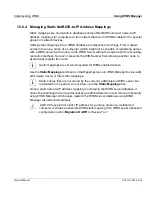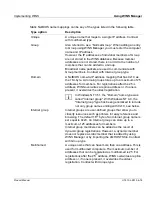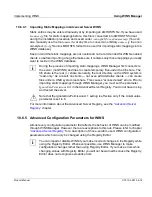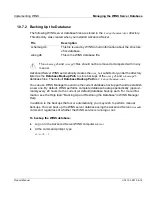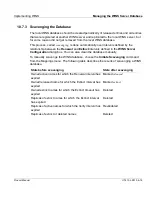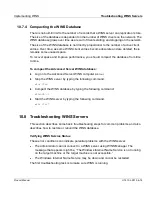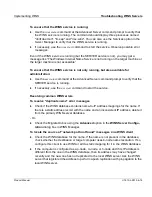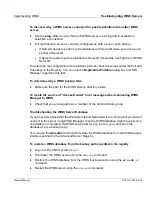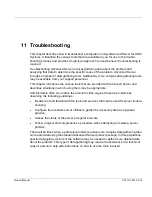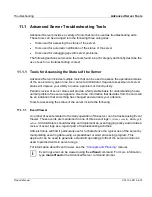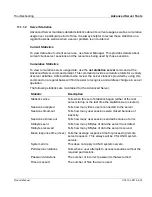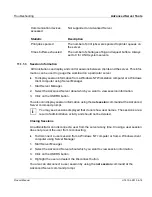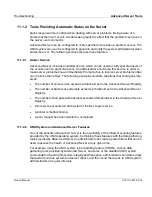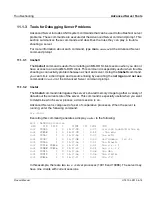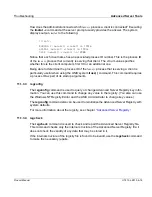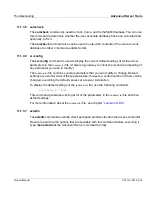
Troubleshooting
Advanced Server Tools
Product Manual
U7613-J-Z815-6-76
©
S
ie
m
ens
Ni
x
d
o
rf
I
n
fo
rm
a
ti
o
ns
s
y
s
te
m
e A
G
19
95
P
fad
:
D
:\
O
761
3e
6\
u76
13
e.
k
1
1
11.1.2
Tools Providing Automatic Status on the Server
Quick response time is critical when dealing with server problems. Being aware of a
problem at the time it occurs can decrease greatly the effect that the problem may have on
the server user community.
Advanced Server can be configured to notify specified users when a problem occurs. The
UNIX system also can be configured to generate and notify the system administrator when
problems occur. The following sections discuss these features.
11.1.2.1
Alerter Service
Advanced Server includes an Alerter service which can be used to notify specified users of
the occurrence of a particular event. An administrator should use this service in order to
make server problems known immediately. Prompt action to resolve server problems often
can minimize their effect. The following examples illustrate situations that could generate
alerts:
●
The number of server errors exceeds a threshold set in the Advanced Server Registry.
●
The number of bad access attempts exceeds a threshold set in the Advanced Server
Registry.
●
The number of bad password attempts exceeds a threshold set in the Advanced Server
Registry.
●
Errors were encountered during start of the Net Logon service.
●
A printer is malfunctioning.
●
A print request has been deleted or completed.
11.1.2.2
UNIX System and Advanced Server Features
One of the benefits of Advanced Server is the availability of the inherent scripting features
provided by the UNIX operating system. Combining these features with the data gathering
tools provided by Advanced Server, an administrator can create a powerful tool that can be
used to assess the health of Advanced Server at any given time.
For example, using the UNIX system job scheduling feature (CRON), various data
gathering tools provided by Advanced Server, and some of the standard UNIX system
commands for checking file system integrity and free space, administrators can write scripts
that perform various system and server checks and then send the results to UNIX system
administrators at regular intervals.

